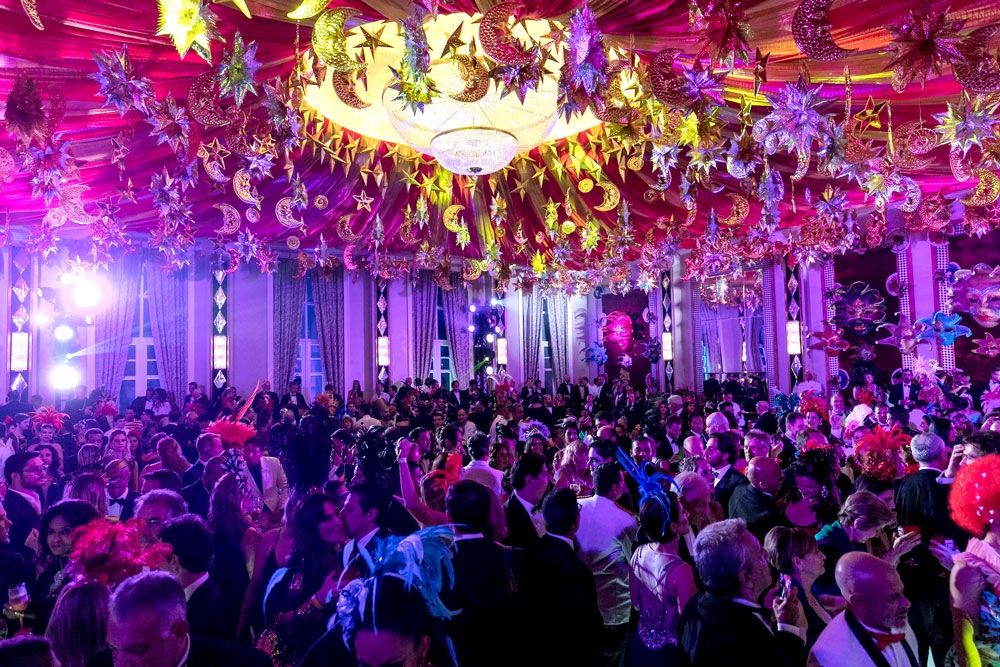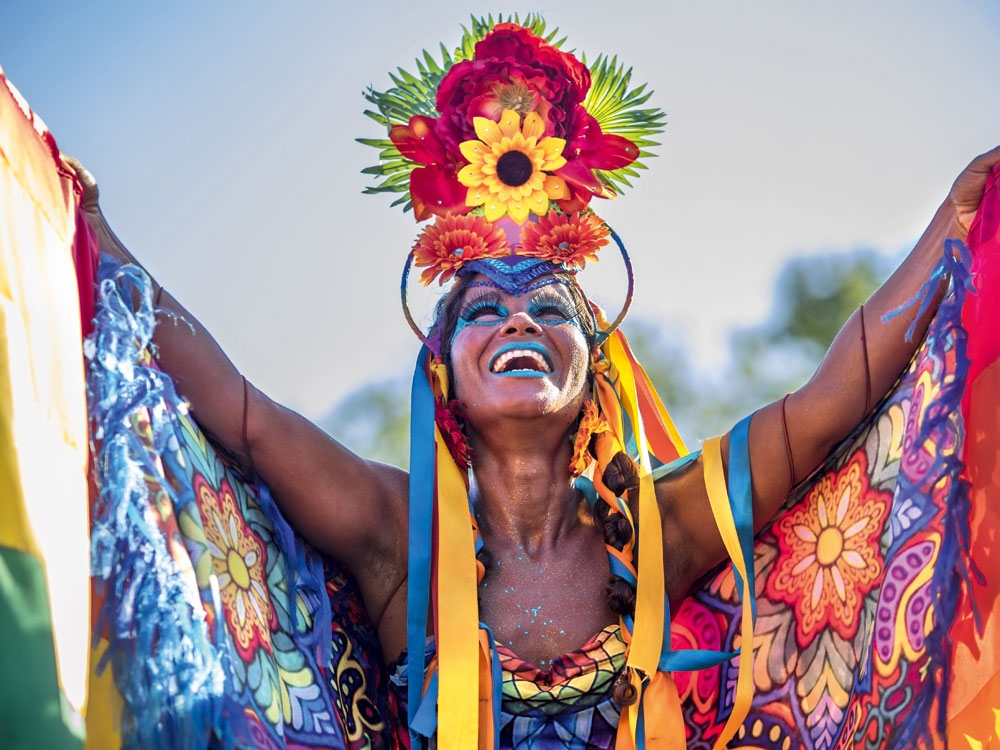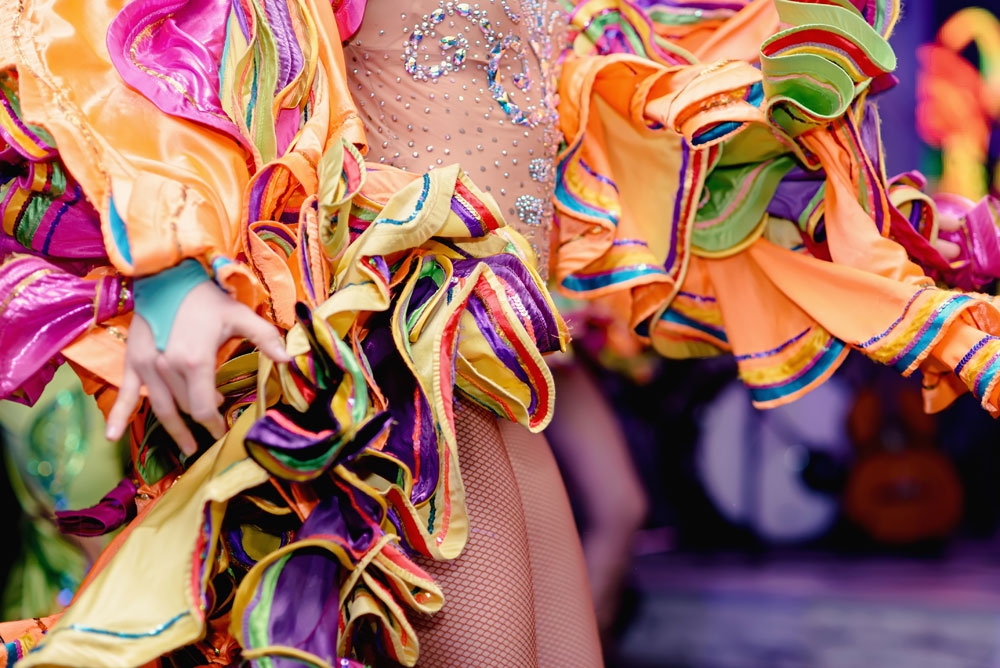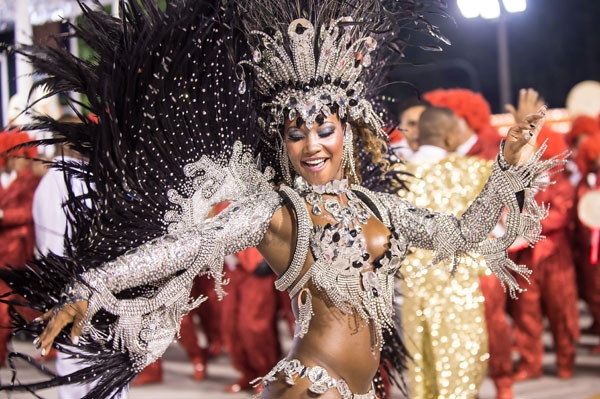Brazil carnival: Razzle dazzle
The modern traveller doesn’t purely book a holiday; we prescribe ourselves holidays, based on what will restore and revive body, mind and spirit. Previously, for me, this has been a yoga retreat in Ibiza, a culture-crammed solo city break to Seville, and a hiking holiday in New Zealand. But after a long, gloomy winter, where the depressing political landscape was matched by the dreary weather, I hit on the perfect prescription: a party. And not just any party, one of the planet’s glitziest, most hedonistic and famous celebrations: Rio Carnival. Surely the biggest party in the world would be just the thing to get my mojo back
After all, I’d be partying with the pros. The first Rio Carnival took place in 1723, conceived as a final chance to feast before the 40 frugal days of Lent begin; the word carnaval is derived from the Latin carne vale, or ‘farewell to meat’. Brazilians, however, took partying so seriously that the Rio Carnival steadily grew into a week-long bacchanal attracting some two million revellers to the city’s streets every day.
Today, proceedings are traditionally kicked off by the Saturday night ball at the Belmond Copacabana Palace – and, as a guest, I manage to bag myself a golden ticket. Grand-dame hotels don’t come more iconic than this place. The property opened in August 1923, and in February 1924 it was host to the first Carnival Ball. It swiftly attracted the global glitterati: past partygoers include Orson Welles, Ginger Rogers, Joan Fontaine, Rhonda Fleming, Walter Pidgeon, Lana Turner, Zsa Zsa Gabor, Kim Novak, Romy Schneider, Kirk Douglas and Rita Hayworth, who showed up in the salons dressed in a traditional ‘baiana’ costume. Legend goes that in 1959 Jayne Mansfield caused a stir when a strap of her dress came undone, while in 1964 Brigitte Bardot was the belle of the ball.
More recent revellers include Gerard Butler, Sir Ian McKellen and Christian Louboutin, and Rio’s hoi polloi spend weeks – and thousands of Brazilian real – concocting dazzling outfits in which to walk the red carpet. I’ve settled on a sequinned Rixo London number, paired with sky-high heels; happily, my party commute from hotel room to ballroom is pleasingly short.



Glamorous affairs
All guests walk the red carpet to enter the ball, as paparazzi flashbulbs go off and champagne corks pop. But still nothing prepares me for the sight of the ballroom. The theme this year is ‘Dolce Vita’ – with a nod to Venice and its sister carnival – and each room is extravagantly adorned in Venetian splendour; professional dancers even dress as masked gondoliers, ushering guests from one salon to the next.
Moving between the extravagant banquet room – vast mounds of lobster tails and platters of glistening oysters – to the samba-ing throng in the ballroom, guests smile appreciatively and compliment each other on their outfits. Glamour is a competitive sport in Brazil, but the room is warm and welcoming; I’ve been to infinitely snobbier house parties in London.
I stifle a gasp when I enter the Golden Room, the in-house concert hall that opened in 1938 and has welcomed the biggest names in entertainment from Europe, the United States and South America, including Dionne Warwick, Josephine Baker, Ella Fitzgerald, Marlene Dietrich, Edith Piaf, Nat King Cole and Tony Bennett. Tickets to the ball start at £420 and reach £1,200 for serviced tables in the Golden Room or a VIP box, so this is no cheap night out, but it’s an honour to carouse where history’s best and brightest partiers have clinked champagne glasses and danced the night away.
I finally fall gratefully out of my heels and into bed at 7am, but the party downstairs has shown no sign of flagging. Rio has officially out-partied me – and this is only the beginning of Carnival.



Samba time
The ball delivered plenty of pinch-me princess moments, but celebration is a gloriously democratic right in Rio, and for the ensuing five nights much of the carnival fun is found in blocos, or street parties, across the city. Rio is famously flamboyant, religiously ribald and shamelessly sybaritic, and I’d have been shirking my hedonistic responsibilities if I didn’t make a pilgrimage to Rio’s Sambadrome during my stay.
The Sambadrome is essentially a huge football stadium, along which competing samba schools perform, taking a fastidiously choreographed hour and 20 minutes to wow the 70,000 spectators and judges.
To our Instagram-addled and CGI-benumbed eyes, it’s not easy for a spectacle to be, well, spectacular, but the sheer artistry of every single float passing me – each one with high production values to rival a West End show – takes my breath away.
Spectators, who have paid between £25 for the cheap seats and £1,000 for a hosted box, samba away merrily, supporting their favourite school, from 11pm until 7am the following morning. And then, afterwards, they go to work as normal. Well, as normal as life gets during Carnival.



Party paradise
I’m the sort of restless traveller who charges around sights and loves discovering new neighbourhoods and exciting little eateries, but in Rio during Carnival, resistance is futile. Every February, during this week, the city grinds to a halt as block parties take over the streets: tough luck, traffic. So I cheerfully abandon my normal tourist urges and surrender entirely to the party spirit. Here, partying is a full-time job.
Back at the Copacabana Palace, the hotel is entirely devoted to the fine art of celebration. A pop-up atelier has landed adjacent to the lobby, selling feathered fascinators and glitzy gowns, like a convenience store for hardcore partiers. Rio’s glitterati lounge poolside, getting hangover-soothing massages from the team of masseuses, while enjoying coffee and much-loved biscoito globo thoughtfully dished out by waiters. As mojitos flow thick and fast, the spa is doing a roaring trade in facials and blow-dries. We dive into a carb-laden buffet brunch at the poolside restaurant, which goes some way towards fixing me. But the hotel’s commitment to the party spirit goes even further: during the inevitable mid-afternoon lull, a samba band in flamboyant carnival costume arrives to raise spirits and get toes tapping.
One of the most glamorous women in the brunch room is the hotel’s formidable general manager, Andrea Natal. “One of my favourite things is welcoming returning guests to the ball every year,” she says. “We have one Carnival regular who is 80 years old.
“Hospitality is definitely one of our country’s strong suits. We know how to be welcoming, funny and creative – and we really know how to enjoy life. Cariocas (people who are born in Rio de Janeiro) in particular love to celebrate. We live for moments like this.”
Sometimes we travel to escape other people. Other times, however, we travel so that we can place ourselves right in the middle of the action, and party with the rest of the planet.
Book it
Journey Latin America offers a seven-day carnival holiday to Rio de Janeiro from £5,322 per person. The price is based on a stay at the Belmond Copacabana Palace and includes flights, transfers, excursions to Sugarloaf Mountain and Christ the Redeemer, Carnival Parade tickets and breakfast daily.

